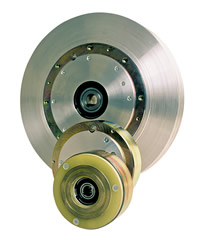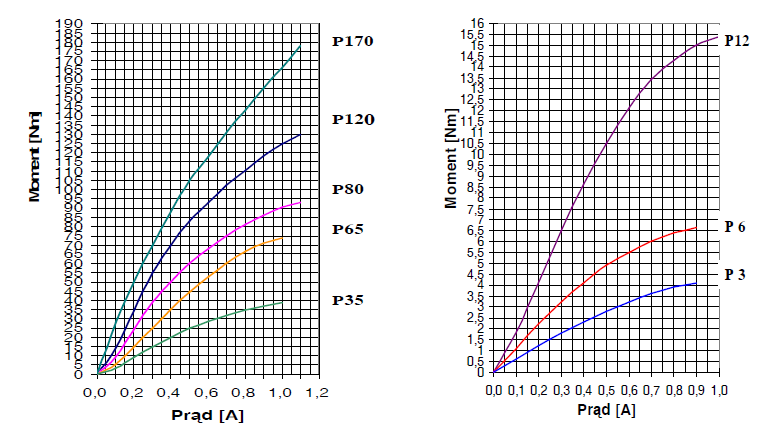Technical description
Powder brakes and clutches make it possible to design drives where the (braking) torque may be adjusted smoothly (programmed), as needed by the user, from the minimum value Mr (residual torque Mr <= 1% Mn), up to the rated torque Mn (Table in catalogue).
Upon engagement, the torque is smoothly increased with a certain delay t09 [ms] (the time for reaching 90% of Mn), and upon disengagement the torque decays, also smoothly, with a delay t01 [ms] (the time for reaching 10% of Mn), whereas its value depends (almost linearly) on the coil current value (see charts).
For braking torque adjustment, we recommend using the EZP-51 controller with coil current set with a 0-10 kΩ potentiometer, or with a signal from 0-10 V (inductive, proximity, force etc.) sensors, or with a 4-20 mA current signal. The set torque is maintained with an accuracy of 5%, irrespective of the number of revolutions per minute or of the slipping between the body and the rotor.
The acceptable rpm ranges are as follows:
- 50-3,000 [min-1] for brakes,
- 50-1,500 [min-1] for clutches.
Powder brakes and clutches may operate with continuous slip, provided that the acceptable heat dissipation rating values specified in the table (catalogue) are not exceeded.
Note: 
For clutches and brakes to operate properly, their rotation axis must be horizontal.
Sample fields of application
Any type of winders, drawing machines or printing machines where the material must be smoothly tensioned, with the tensioning element slipping.